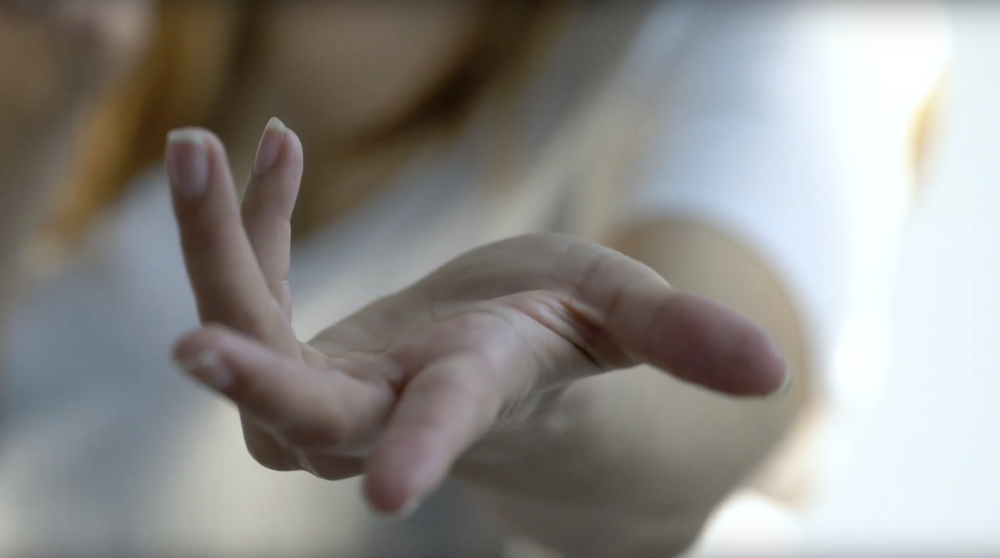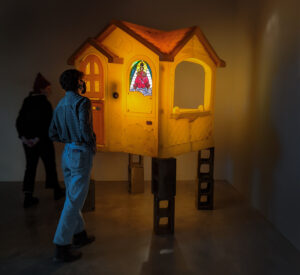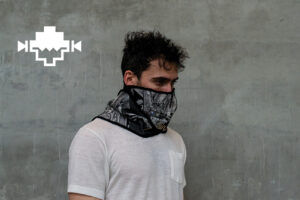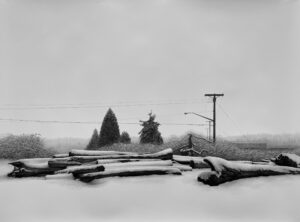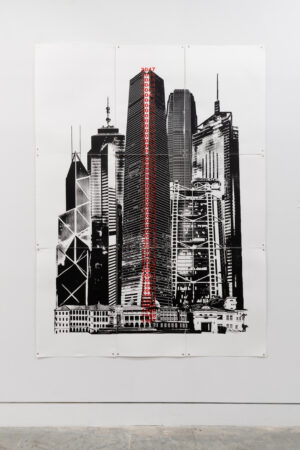Making Room for Resonance
Gemma Crowe
Sonic Surfaces: one, two & three
Materials: Found wooden surfaces, audio transducers, looping sound.
The sonic surfaces series is a continuation of work developed for my thesis exhibition “Making Room for Resonance: a space for sonic illusion and sensation,” an immersive sound installation.
Making Room for Resonance developed through the fabrication of a series of sonic surfaces and resonant sound structures. The sonic surfaces are created from remnants of materials designed to house and contain spaces. Sound is recorded through each individual surface and editing using movement. Audio transducers allow the sounds to reanimate action on each surface.
Sound is an indicator of movement and can depict the conditions of movement. I am imbuing sound with movement qualities to generate spatial awareness in the audiencing body as well as a bodily understanding of the circumstances which generate specific sound waves. My artistic research with sound has been the most profound exploration of spatial thinking and the sensory apprehension of movement. Using spatial sound and proprioceptive perception, I am asking the audience to feel movement through listening.
These surfaces resonate in an embodied way themselves. Once part of a living organism they maintain their connective tissues and the sound inhabits these fibers, bearing resemblance to a complex resonant body.
Sound recordings available here:
Sonic surface one:
The physical gesture and impact are reproduced to reanimate action upon the surface they were created. How clearly does the sound indicate action? This knowing is innate and embodied.


Sonic surface two:
Dynamic pathways make these harmonic characters converge and diverge in a spatial narrative. The sound is created using embodied sonic design and represents the character and life that I find in an embodied approach to using technology. Can movement be heard in the way a harmony of tones becomes one sound, as a chorus of action?




Sonic surface three:
I am using brown, pink, white, and blue noise to indicate a moving physical form. Mimicking, with frequency, the levels of the color spectrum this work uses sonic indicators of shape, direction, and force to illustrate a scene. Viewers are encouraged to encounter this work as they would a visual piece, but instead; listening to see.
I create Sound Shadows with a source blocking technique that uses the audible interference produced by my moving body partially obstructing the reception of sound by a recording device. This is akin to the way a body produces a shadow as it blocks light from a surface. The sound shadows are most audible as the sound waves are eclipsed by the body. The conjecture is that during playback the sound shadows could perceptually rematerialize the moving physical form that was blocking the sound during recording.

I am working with sound as a moving material form. As part of the practice-based research component of my thesis, I have discovered two ways to make the movement of sound perceptible: through recording a single, static sound source while wearing in-ear binaural microphones as I move my body around the sound, and through the creation of Sound Shadows. I aim to create the perception of movement in space around the body or the sensation of self-motion. Both of these techniques encourage the listener to perceive sound and space with proprioception (the perceptual sense that situates the body), which in turn activates the body through kinesthetic empathy. By refining my aesthetic capabilities with sound I am practising theories of embodiment through auditory manipulation and mediated sensation.
As I physically inhabit the recording of sound defined by all the expression and constraints of a human body, I am producing a specific corporeal intention which I hope lands in the body of the listener as a more nuanced experience than what could be developed through spatial sound editing. I am proposing that in depicting dynamic material form, sound can potentially reanimate the moving body in space. The aesthetic specificity of movement and sound holds the potential for auditory creations as performance and a felt sense of bodies remanifested in space. How does the body recognize movement and how can I convincingly recreate an event for the auditory senses?
